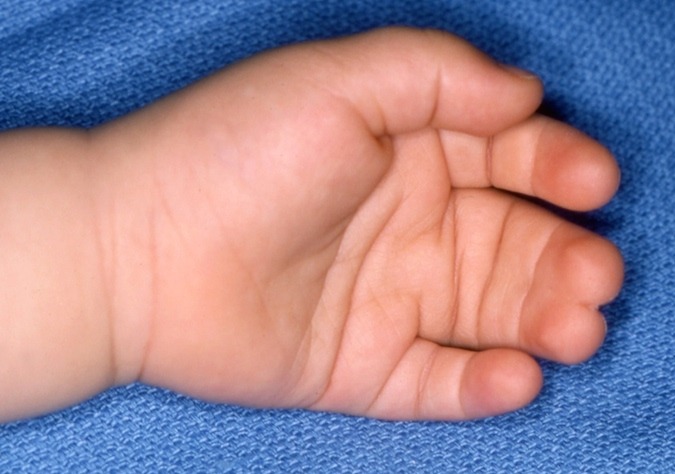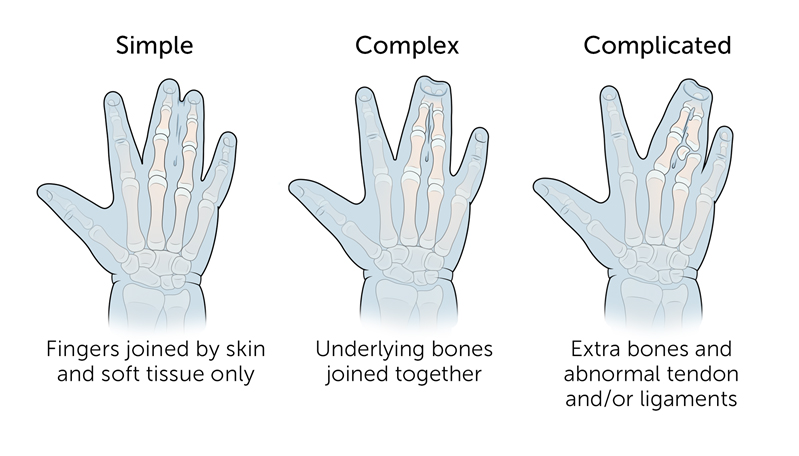
Over View
What is syndactyly?
Syndactyly is a condition in which children are born with fused or webbed fingers. About half of children with syndactyly have it in both hands (bilateral). Most of the time, syndactyly affects the fingers. Sometimes it affects the toes, but not as often.
While any two or more fingers can be joined, syndactyly most often occurs between the middle and ring fingers.
What are the symptoms of syndactyly?
Symptoms of syndactyly differ depending on the type your child has. There are three types of syndactyly: Simple, complex, and complicated.

- Simple syndactyly means that the fingers are joined by skin and soft tissue only.
- Complex syndactyly means that the underlying bones are also joined together.
- Complicated syndactyly means that there are extra bones, and the tendons and ligaments have developed abnormally.
What causes syndactyly?
During pregnancy, a baby’s hands form in the shape of a paddle and later split into separate fingers. This happens very early, around the sixth to eighth week of pregnancy. Syndactyly happens if two or more fingers do not separate during this time.
How is syndactyly diagnosed?
Syndactyly is often diagnosed at birth. Sometimes it is detected even earlier, on a prenatal ultrasound.
Your baby’s doctor may use x-rays to assess the underlying structure of your baby’s fingers and determine a course of treatment. They may also evaluate your baby’s arms, shoulders, chest, feet, head, and face to look for signs of other abnormalities.
How is syndactyly treated?
Syndactyly is treated with surgery to separate the joined fingers. Your child will probably have this operation when they are between 1 and 2 years old.

During surgery, the skin is split evenly between the two fingers. Your child may need a skin graft or a skin substitute to cover the newly separated fingers. Skin grafts are usually taken from the elbow or wrist crease to minimize scarring.
What happens after surgery?
Your child will wear a cast or bandage covering their hand, lower arm, and elbow for two to three weeks. This will keep their hand still and protect the healing skin. Once the cast comes off, they will wear a splint to keep the fingers apart for six weeks.
Your child’s doctor may recommend occupational therapy to reduce scarring, manage stiffness and swelling, and improve function.